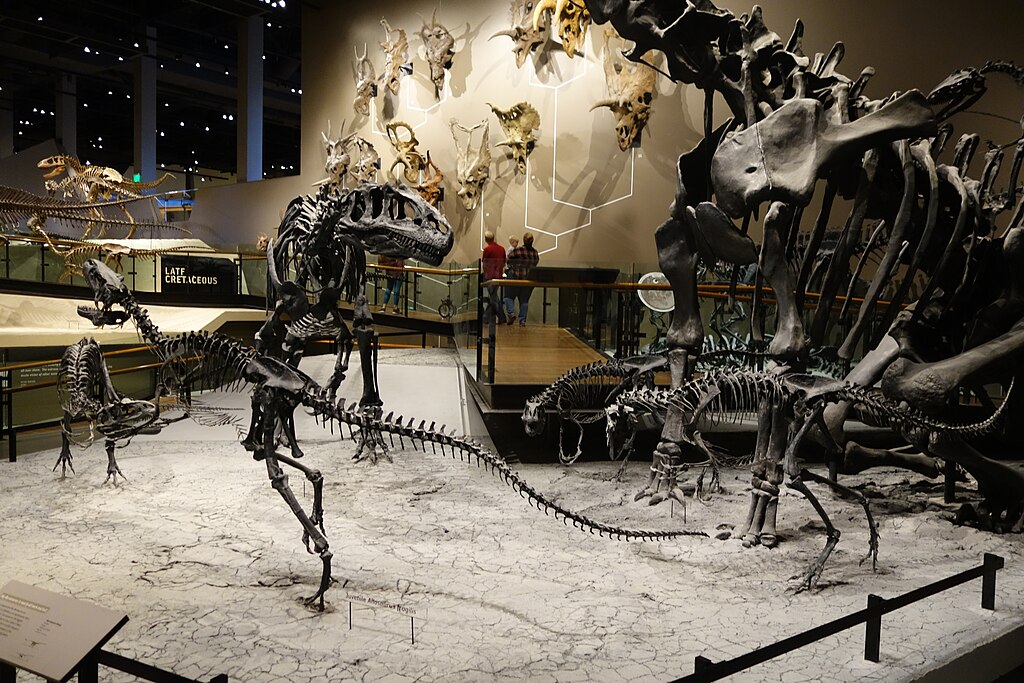In the grand narrative of evolution, few transformations capture our imagination like the emergence of birds from dinosaur ancestors. Among the most compelling pieces of evidence in this evolutionary puzzle is a remarkable fossil discovery that paleontologists have dubbed “the transitional tail.” This extraordinary specimen provides a rare glimpse into one of evolution’s most dramatic morphological shifts—the transformation of a rigid dinosaur tail into the versatile, abbreviated tail structure seen in modern birds. With its unique anatomical features preserved in stone, this fossil represents a crucial missing link that helps scientists piece together how feathered dinosaurs eventually took to the skies, fundamentally changing our planet’s ecosystems and evolutionary trajectory.
The Discovery That Rocked Paleontology

The fossil in question was discovered in the rich paleontological beds of northeastern China’s Liaoning Province, an area famous for its exceptionally well-preserved specimens from the Early Cretaceous period, approximately 125 million years ago. Unearthed in 2013, the specimen was embedded in fine-grained sedimentary rock that had meticulously preserved not only bone structure but also delicate features like feathers and soft tissue impressions. The discovery immediately attracted international attention when researchers realized they had found something extraordinary—a creature displaying a previously undocumented intermediate stage in tail evolution. The fossil was excavated from the Jehol Biota, a geological formation known for yielding some of the most important feathered dinosaur specimens in paleontological history, including the famous Microraptor and Anchiornis. This remarkable preservation quality, often called “exceptional fossilization,” allowed scientists to examine minute details that would have otherwise been lost to time.
Meet Archaeopteryx: The Original Bird-Dinosaur Hybrid
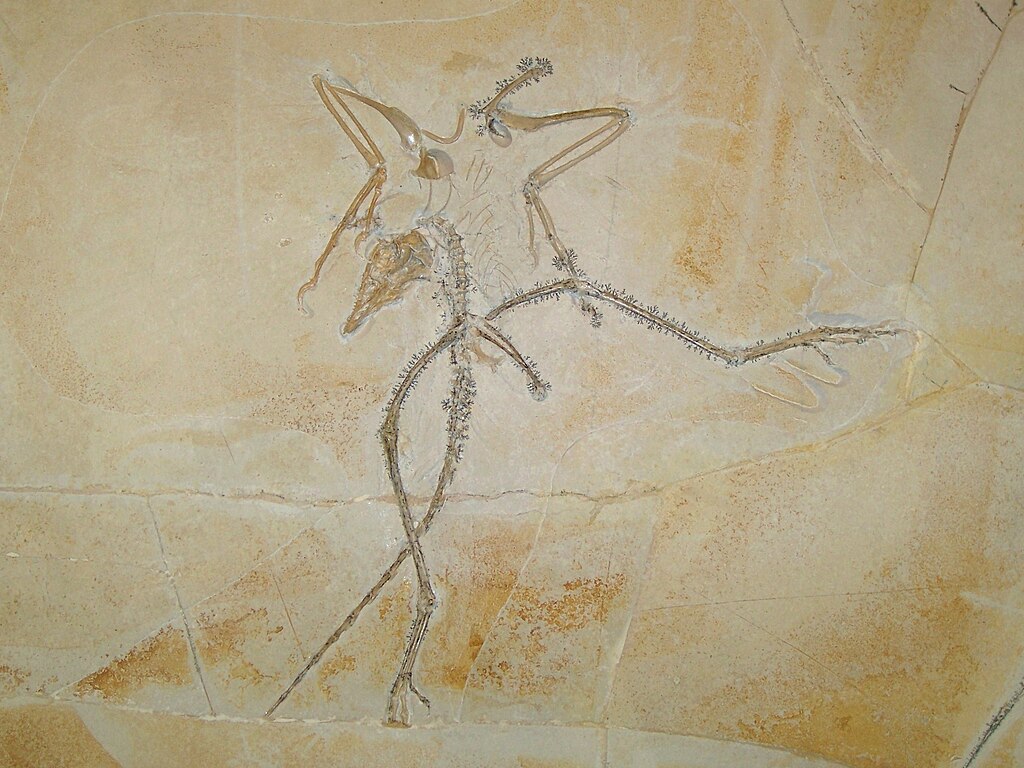
Before diving into our transitional tail specimen, it’s crucial to acknowledge Archaeopteryx, the first discovered link between dinosaurs and birds. First unearthed in Germany in 1861, Archaeopteryx shocked Victorian scientists with its bizarre combination of reptilian and avian features. With the clawed fingers, teeth, and long bony tail of a dinosaur but the wings and feathers of a bird, this 150-million-year-old creature became evolution’s poster child. Archaeopteryx showed paleontologists that birds didn’t simply appear but evolved gradually from dinosaur ancestors. However, while revolutionary, Archaeopteryx still possessed a relatively elongated, bony tail more reminiscent of its dinosaur ancestors than modern birds. This left scientists wondering about the specific evolutionary steps that transformed the long, rigid dinosaur tail into the shortened, flexible pygostyle structure that characterizes all modern birds. Our transitional tail fossil helps fill that crucial gap in the evolutionary record, showing an intermediate stage that Archaeopteryx doesn’t capture.
Anatomy of the Transitional Tail
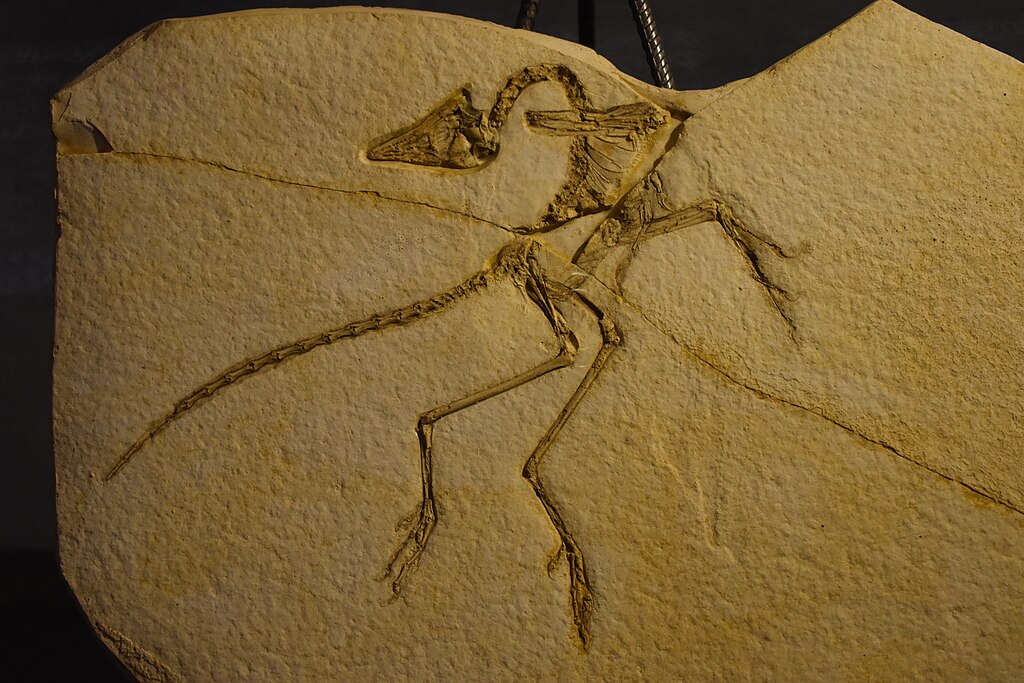
The transitional tail fossil displays a remarkable anatomical configuration that clearly illustrates its intermediate evolutionary position. Unlike typical theropod dinosaurs with their long, stiff tails composed of many individual vertebrae, this specimen shows a partially fused structure at the tail’s end, representing an early version of what would eventually become the pygostyle in modern birds. The pygostyle is a specialized bone formed from fused vertebrae that supports a bird’s tail feathers and provides anchor points for crucial flight muscles. In this fossil, scientists observed approximately ten vertebrae with the beginnings of fusion, while the base of the tail retained the ancestral, unfused condition. This configuration perfectly captures the evolutionary transition in progress. Additionally, the tail preserved evidence of both pennaceous feathers (similar to those used in flight by modern birds) and more primitive, filamentous feathers. This combination of features presents compelling evidence of a creature caught in evolutionary transition—not yet a bird, but no longer a typical dinosaur.
The Significance of Tail Evolution in Flight Development

The transformation of the dinosaurian tail into the avian pygostyle represents far more than a simple shortening of an appendage—it fundamentally enabled powered flight. The long, heavy tails of dinosaurs created significant biomechanical constraints that would have made sustained, controlled flight impossible. By examining the transitional tail fossil, researchers can understand how this evolutionary modification solved multiple problems simultaneously. The shortened, fused structure significantly reduced weight at the animal’s posterior, shifting the center of gravity forward to a position more favorable for flight mechanics. Additionally, the developing pygostyle provided a crucial attachment point for the rectrices (tail feathers) that modern birds use as a rudder during flight. This modification allowed for greater maneuverability in the air and better control during landing sequences. The transitional tail fossil therefore illuminates not just a morphological change but a pivotal functional adaptation that opened up the aerial niche to vertebrates for the first time since pterosaurs had claimed the skies millions of years earlier.
Dating and Placing the Fossil in Evolutionary Context
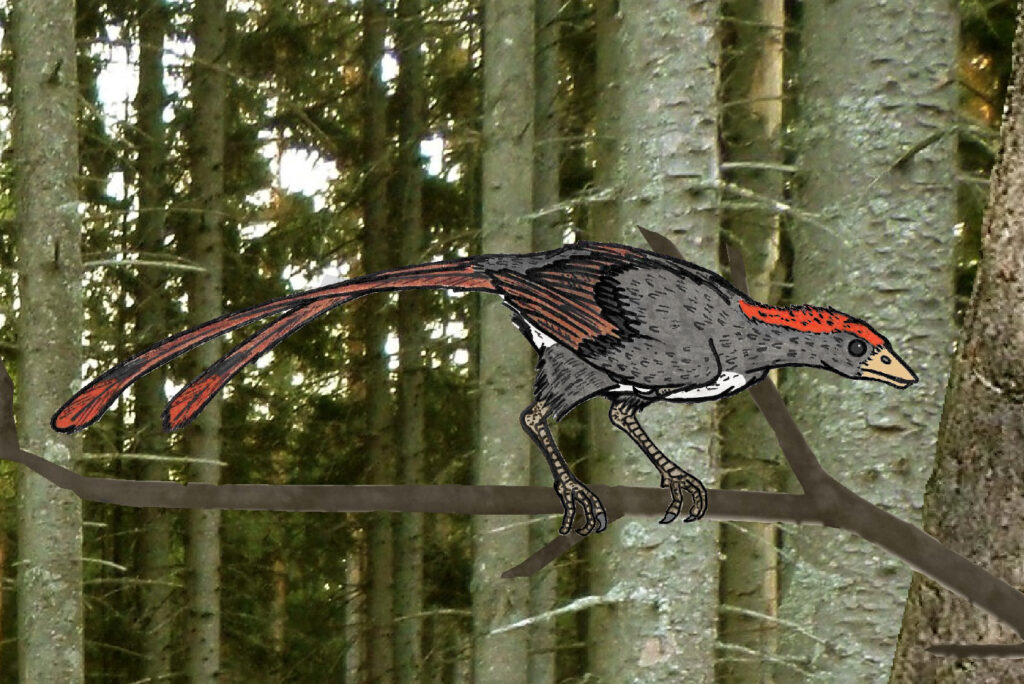
Precise radiometric dating places our transitional tail specimen within the Early Cretaceous period, approximately 125 million years ago. This timing is particularly significant when viewed within the broader context of dinosaur-bird evolution. It falls after the appearance of early feathered dinosaurs like Sinosauropteryx (approximately 125-120 million years ago) but before the emergence of more advanced avian species like Confuciusornis (approximately 120 million years ago), which already possessed a modern pygostyle. This chronological positioning perfectly aligns with its morphological features, confirming its status as a true intermediate form. The fossil comes from a time when numerous evolutionary experiments were occurring among maniraptoran dinosaurs, with various lineages developing different adaptations for gliding, climbing, and eventually powered flight. By analyzing where this specimen fits in both time and morphology, paleontologists can reconstruct the sequence and timing of anatomical changes that led from ground-dwelling theropods to fully flight-capable birds, essentially watching evolution unfold through the fossil record.
The Feather Connection: Plumage Preserved in Stone
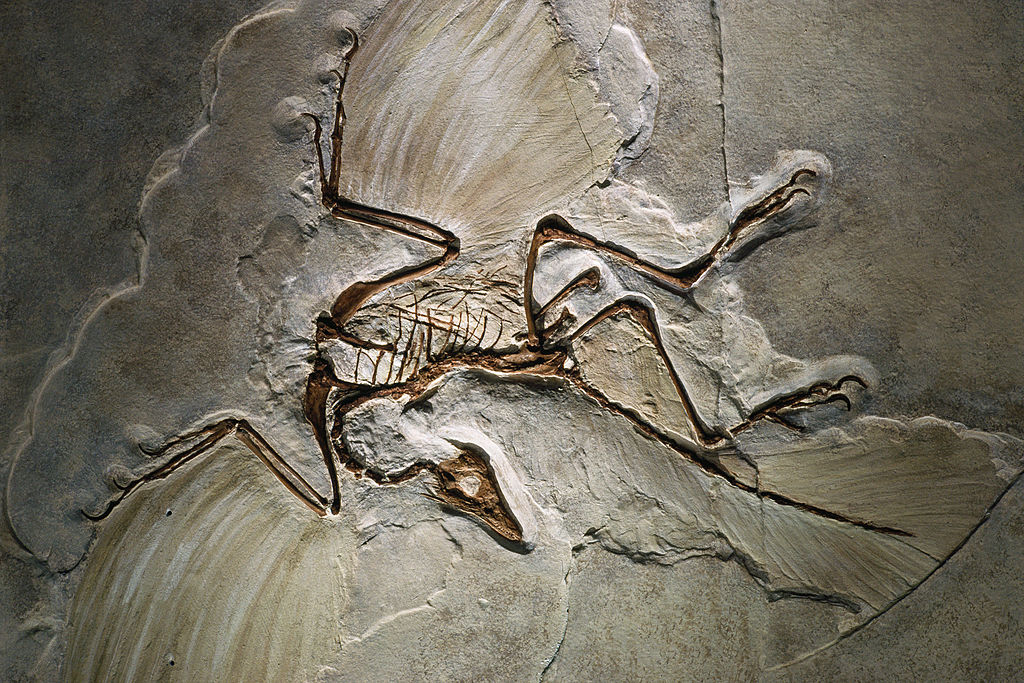
One of the most remarkable aspects of the transitional tail fossil is the exceptional preservation of feather structures surrounding the tail vertebrae. Under powerful microscopes and specialized lighting, researchers identified multiple types of feathers, including primitive filamentous forms and more advanced pennaceous feathers with central shafts and barbs. This diversity of feather types provides crucial information about the evolutionary development of plumage alongside skeletal changes. The pennaceous feathers attached to the tail show a fan-like arrangement similar to the tail fans of modern birds, suggesting that even before the complete formation of the pygostyle, these dinosaurs were developing feather arrangements useful for display, balance, or rudimentary aerodynamic functions. Microscopic analysis of the feather impressions even revealed traces of original pigmentation, indicating that the tail likely featured contrasting bands of color. This revelation suggests that visual display may have been an important evolutionary driver in feather development, alongside any aerodynamic advantages—a reminder that natural selection often acts on multiple functional aspects simultaneously.
Challenging Old Theories of Dinosaur-Bird Evolution

The discovery of the transitional tail fossil has forced paleontologists to revise several long-standing theories about the dinosaur-to-bird transition. For decades, the prevailing model suggested a gradual, linear progression from ground-dwelling dinosaurs to arboreal gliders and finally to powered flyers. However, this specimen indicates that tail reduction and pygostyle formation may have occurred relatively rapidly in evolutionary terms, and possibly independently in several lineages of maniraptoran dinosaurs. This suggests a more complex, bushy evolutionary pattern rather than a simple linear progression. Additionally, the fossil challenges traditional assumptions about which features evolved first in the dinosaur-bird transition. While scientists previously thought that forelimb modifications for flight preceded tail reduction, this specimen shows that tail evolution was well underway in some lineages before wings had fully developed. This forces a reconsideration of the evolutionary sequence and suggests that different adaptations for aerial locomotion may have evolved at different rates in different lineages, creating a mosaic pattern of evolution rather than a straightforward transformation.
Comparing the Tail to Modern Bird Anatomy

When examining the transitional tail alongside the tail structure of modern birds, the evolutionary relationship becomes strikingly clear. Modern birds possess a pygostyle—a shortened, fused structure typically composed of 4-6 vertebrae at the end of the spine. This compact arrangement supports the tail feathers (rectrices) and provides attachment points for the complex musculature that controls tail movement during flight. By contrast, our transitional fossil shows approximately ten partially fused vertebrae, representing an intermediate stage between the lengthy, multi-vertebrae tails of dinosaurs and the highly abbreviated pygostyle of modern birds. The fossil also lacks the fully developed specialized muscles and tendons seen in contemporary avian species that enable the precise control of individual tail feathers. However, subtly developed grooves on the vertebrae suggest the beginnings of specialized attachment points for more complex musculature. This comparative analysis allows scientists to trace the gradual reduction and specialization of the tail structure across millions of years of evolution, providing a clearer picture of how dramatic anatomical changes can occur through incremental modifications over time.
Other Transitional Features in the Specimen
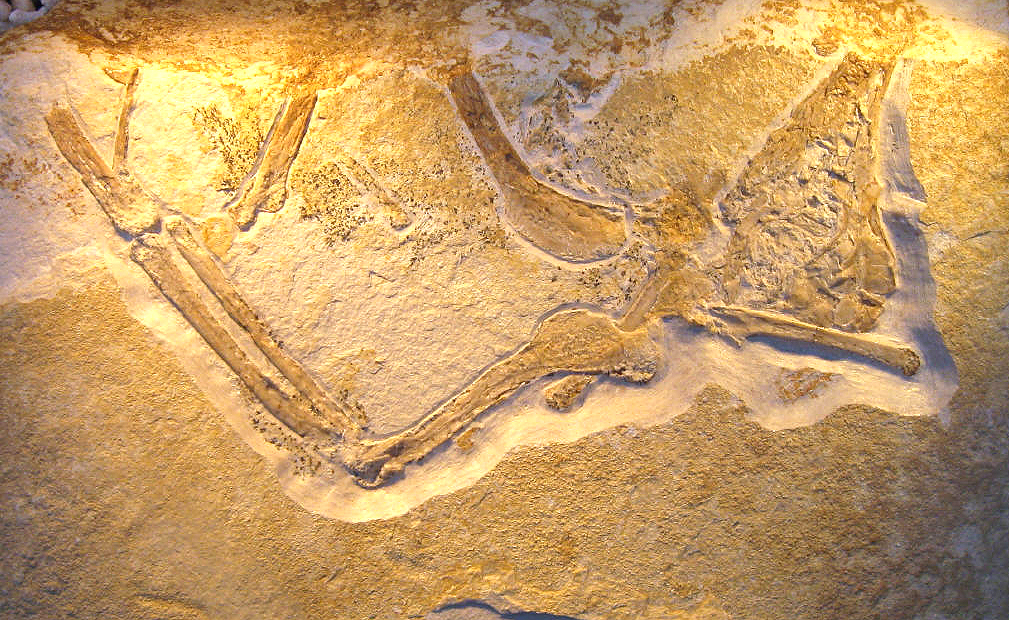
While the tail structure is undoubtedly the most notable transitional feature of this remarkable fossil, it preserves several other anatomical characteristics that document the dinosaur-to-bird transition. The specimen shows partially developed air sacs extending into the vertebrae, an early version of the pneumatic skeletal system that makes modern bird bones both lightweight and strong. This adaptation would have decreased overall body weight, a critical requirement for flight. The pelvic structure also displays transitional features, with a partially reversed pubis bone that would eventually evolve into the fully reversed pubis of modern birds, which facilitates egg-laying while maintaining an aerodynamic body shape. The forelimbs, though not fully transformed into wings, show elongated fingers and evidence of asymmetrical feather attachment points, suggesting they were developing aerodynamic functions. These additional transitional features, preserved alongside the tail, provide a comprehensive snapshot of an organism caught mid-evolution, with multiple body systems simultaneously adapting to new ecological niches and locomotor strategies.
Reconstructing the Creature: What Did It Look Like Alive?

Based on the fossil evidence and comparative anatomy, paleontologists have created detailed reconstructions of how this transitional creature would have appeared in life. Standing approximately 50 centimeters tall, the animal would have resembled a small, agile dinosaur with distinctly bird-like features. Its body would have been completely covered in feathers of various types—simple filamentous feathers providing insulation across most of the body, and more complex pennaceous feathers on the forelimbs and tail. The partially shortened tail would have displayed a fan of colorful feathers, likely used for display or rudimentary balance during leaping or gliding behaviors. While not capable of the powered, sustained flight seen in modern birds, this creature was likely an accomplished climber and glider, using its feathered forelimbs and tail to control descent from trees or extend leaping distance. Its skull would have retained small teeth, unlike the beaked mouths of modern birds, and its hands would have maintained functional claws at the ends of elongated fingers. This curious mix of features creates a creature that would appear simultaneously familiar and alien to modern eyes—recognizable as a bird ancestor, yet distinctly different from any animal alive today.
The Ecological Niche of the Transitional Species
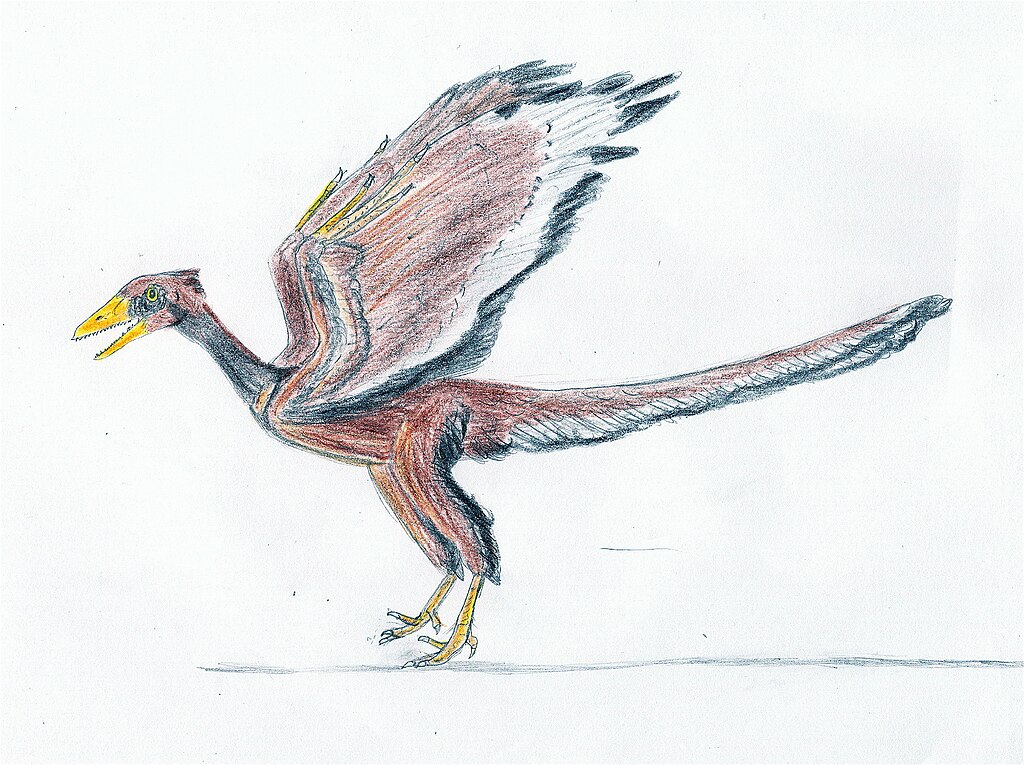
Understanding the lifestyle and ecological role of this transitional species provides crucial context for its evolutionary adaptations. Paleoenvironmental analysis of the fossil formation indicates the creature inhabited a lush, forested ecosystem surrounding ancient lakes, similar to contemporary temperate forests but with different flora. This environment would have provided abundant trees for climbing and gliding, as well as numerous insects and small vertebrates for prey. The transitional tail, with its developing fan of feathers, would have offered advantages in this specific ecological context. While not yet optimized for true powered flight, the tail would have provided stability during climbing activities and controlled descent from heights, potentially allowing the animal to escape predators or access food sources unavailable to strictly terrestrial animals. Trace element analysis of the fossil bones suggests a diet primarily consisting of insects and small vertebrates, placing this creature in a mesopredator niche within its ecosystem. This ecological positioning—neither fully ground-dwelling nor fully aerial—created the selective pressures that would continue driving the evolution toward more advanced flight capabilities and further tail modifications in descendant species.
Similar Transitional Fossils in the Record

The transitional tail fossil doesn’t stand alone in the paleontological record, but rather forms part of a growing collection of intermediate specimens documenting the dinosaur-bird transition. Yi qi, discovered in 2015, represents another fascinating transitional form with membranous wings supported by an elongated wrist bone, showing an evolutionary experiment with flight structures different from the fully feathered wings that eventually prevailed in birds. Microraptor, with its four wings and long feathered tail, demonstrates another approach to aerial locomotion that evolved in parallel with the lineage leading to modern birds. Zhenyuanlong, a feathered dromaeosaurid with impressively developed wings despite being too large for flight, suggests that feathers and wing structures may have evolved initially for purposes other than aerial locomotion. When examined collectively, these fossils reveal a complex evolutionary landscape where numerous dinosaur lineages were independently developing flight-related adaptations, though only one lineage ultimately gave rise to modern birds. This diversity of transitional forms underscores the exploratory nature of evolution, with natural selection testing various anatomical configurations before certain arrangements proved most advantageous and persisted through time.
The Ongoing Search for Missing Links

While the transitional tail fossil represents a significant breakthrough in understanding dinosaur-bird evolution, paleontologists continue searching for additional specimens to fill remaining gaps in the evolutionary sequence. Particularly sought-after are fossils documenting the early stages of wing development, the transition from teeth to beaks, and the evolution of the unique avian respiratory system. Field expeditions continue throughout China’s Liaoning Province and similar Cretaceous formations globally, employing increasingly sophisticated technologies to locate and excavate potential specimens. Ground-penetrating radar now allows researchers to identify fossil-bearing layers without destructive excavation, while computed tomography (CT) scanning enables detailed examination of specimens without damaging delicate structures. The search extends beyond skeletal features to trace fossilized soft tissues, with researchers developing new chemical techniques to identify degraded proteins and other biomolecules that might survive in exceptionally preserved specimens. Each new discovery has the potential to further refine our understanding of how dinosaurs transformed into the birds that now dominate our skies, making paleontology an ever-evolving science where today’s certainties may be revised by tomorrow’s discoveries.
Conclusion: What This Fossil Teaches Us About Evolution

The transitional tail fossil provides a powerful window into the evolutionary process itself, beyond its specific relevance to bird origins. It captures evolution in action—showing not a chimeric combination of dinosaur and bird parts, but a genuine intermediate form with its own functional integrity. This specimen demonstrates how major anatomical transitions don’t occur as sudden, dramatic leaps but through incremental modifications that each provide some adaptive advantage in their own right. The partially fused vertebrae and mixed feather types weren’t evolutionarily “incomplete”; they represented an adaptation perfectly suited to the creature’s specific ecological niche and locomotor needs. This fossil also illustrates the mosaic nature of evolutionary change, where different body systems transform at different rates rather than changing in perfect concert. Perhaps most importantly, this remarkable specimen reminds us that the boundaries between major animal groups—like dinosaurs and birds—are human constructs imposed on what is actually a continuous spectrum of changing forms across evolutionary time. In the story told by this ancient tail, we see not just the birth of birds, but the fundamental nature of evolutionary transformation itself.



